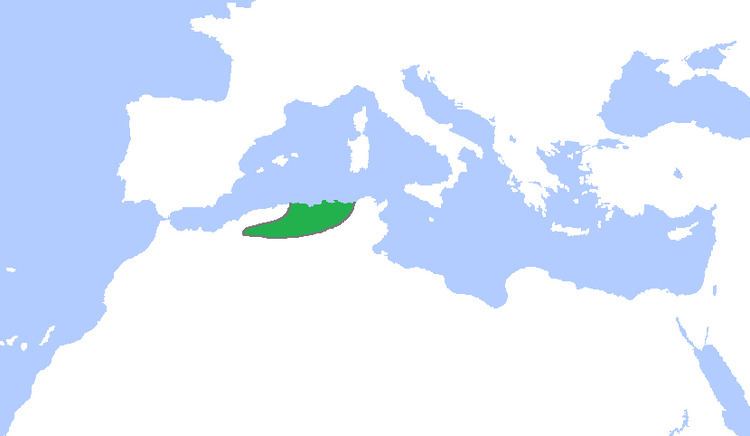Religion Islam 1008–1028 Hammad ibn Buluggin | Government Monarchy 1121–1152 Yahya ibn Abd al-Aziz | |
 | ||
Capital Beni Hammad (until 1090)
Béjaïa (after 1090) Languages Berber, Classical Arabic, Andalusi Romance | ||
The Hammadid dynasty was a Sanhaja Berber dynasty that ruled an area roughly corresponding to north-eastern modern Algeria between 1008 and 1152. Its realm was conquered by the Almohad Caliphate. Soon after coming to power, they rejected the Ismaili doctrine of the Fatimid Caliphate, and returned to Maliki Sunnism, acknowledging the Abbasids as rightful Caliphs.
Contents
The Hammadid dynasty's first capital was at Qalaat Beni Hammad. It was founded in 1007, and is now a UNESCO World Heritage Site. When the area was sacked by the Banu Hilal tribe, the Hammadids moved their capital to Béjaïa in 1090.
History
In 1014, Hammad ibn Buluggin, a Berber who had been placed as governor of the central Maghreb, declared himself independent from the Zirid dynasty. The kingdom at the time ruled most of the region from Morocco to Tunisia. Hammad obtained recognition from the Abbasid Caliph of Baghdad. The Zirids sent an army, but two years later a peace was signed, although the Zirid recognized the Hammadid legitimacy only in 1018.
Hammad founded a new capital in Qalaat Beni Hammad. With the Banu Hilal menace rising (spurred by the rival Fatimid caliphs of Egypt), they moved it to Béjaïa, which became one of the most prosperous cities in the medieval Mediterranean (1052).
